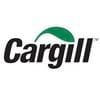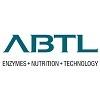Explore all the information on
Poultry egg quality
Egg quality defines those characteristics of an egg that affect consumer acceptability and preference. Components of quality include shell quality and interior egg quality for shell eggs, and interior egg quality for further processed eggs. The quality of the egg once it is laid cannot be improved. Hence, its maintenance is mostly a preventive process. Egg quality is influenced by several factors including rearing, temperature, humidity, handling, storage, and egg age. Shell quality: There are five major classes of shell defects: integrity, texture, shape, color, and cleanliness. Internal egg quality involves functional, aesthetic and microbiological properties of the egg yolk and albumen. The proportions of components for fresh egg are 32% yolk, 58% albumen and 10% shell. Regarding exterior egg quality, the shell of each egg should be smooth, clean and free of cracks. The eggs should be uniform in colour, size and shape.
Kim Yun Ho, President of Korean Poultry Co, shares insights on South Korea's booming egg consumption and the company's long-standing partnership with Hy-Line....
Comments : 0
Recommendations: 0
Paul Kabaiko Mbogo, Technical Specialts, Sub-Saharan Africa at Hy-Line, speaks about How Hy-Line is providing essential support, ensuring better production, and promoting eggs as a vital nutritional resource in Africa...
Comments : 0
Recommendations: 0
Guna Chandra Bista (Avinash group) discusses the evolving poultry sector, highlighting rising disease challenges, vaccination gaps, and the country's growing egg consumption in Nepal. With a strong relationship since 1992, Hy-Line International remains a key partner, supporting Nepal’s market with highly accepted brown varieties....
Comments : 0
Recommendations: 0
Wataru Hashimoto (Japan Layer) shares insights on Hy-Line International’s presence in Japan. As a trusted distributor, the company provides top egg production solutions. With a growing market, Hy-Line continues to lead with quality and innovation....
Comments : 0
Recommendations: 1
INTRODUCTION The ability to maintain an affordable, safe, and sustainable food supply is a global challenge. Meat consumption trends are changing, with increasing preferences for cheaper and processed white meat and a decline in cereals share of the total food (Sefeedpari et al., 2013; Faridi et al., 2011). The consequent increases in poultry meat production by a factor of seven (3206%) and eggs by a factor of three have overburdened sustainable production (Sousa et al., 2005)....
Comments : 0
Recommendations: 0
Theresia Lavergne (Natural Biologics) explains her research with yeast components and phytogenics to enhance flock health and help sustain egg production in this Engormix interview during IPPE 2025 in Atlanta, USA.
...
Comments : 0
Recommendations: 0
.jpg&w=3840&q=75)

Introducing Afla-V ONE: Fast, precise aflatoxin detection for complete feeds and pet foods
Suggested link
Mike Persia (Virginia Tech) discusses direct-fed microbials, their modes of action, and their positive impact on energy and eggshell quality in this Engormix interview during IPPE 2025 in Atlanta, USA....
Comments : 0
Recommendations: 0
Mike Persia (Virginia Tech) explains his research on the use of emulsifiers to improve feeding efficiency and its impact on performance, egg quality, and abdominal fat pads in this Engormix interview during IPPE 2025 in Atlanta, USA....
Comments : 0
Recommendations: 0
Some breeder flocks have higher egg peak production, 92%, whereas other breeder flocks reach 82% at egg peak. On the other hand, some broiler breeders lay a good peak egg production, but as hens age, egg production descends more than expected. In this situation, how can we increase the persistence of egg production in broiler breeders? Breeder managers should evaluate the following four points for improving the persistence of egg production: (a) body weight uniformity and peak egg...
Comments : 5
Recommendations: 3
Protein Availability vs. Affordability in India: A Reality Check Author: A.Ashraf Ali Protein is a fundamental nutrient essential for muscle development, immunity, and overall health. However, in India, access to adequate protein remains a challenge due to economic disparities, dietary habits, and affordability constraints. While protein-rich foods are available, their consumption remains low, leading to widespread protein deficiency. This article explores the...
Comments : 0
Recommendations: 0
Jörg Hurlin (Agri Advanced Technologies) discusses their specialized systems for hatching egg sanitation, in-ovo sexing, and breeder sorting in this Engormix interview during IPPE 2025 in Atlanta, USA....
Comments : 0
Recommendations: 1
Raquel Burin (Zinpro) discusses the correlation between eggshell translucency and performance parameters, in this Engormix interview during IPPE 2025 in Atlanta, USA....
Comments : 0
Recommendations: 1
Angela Guaiume (Cargill) explains the benefits and impact of this technology on egg production and persistency of lay, in this Engormix interview during IPPE 2025 in Atlanta, USA....
Comments : 0
Recommendations: 0
Author details: 1 Faculty of Agronomy and Veterinary Medicine, University of Brasília, Brasília 70910-900, Brazil 2 Center for Nuclear Energy in Agriculture (CENA), University of São Paulo, São Paulo 13416-000, Brazil 3 Institute of Biological Sciences, University of Brasília, Brasília 70910-900, Brazil 4 Federal Institute of Brasília—Campus Planaltina, Brasília 73380-900, Brazil. 1....
Comments : 0
Recommendations: 0
Naveen Sehgal, owner of Acorn Marketing, shares insights on overcoming challenges in North India’s layer market. He discusses rising raw material costs, promising egg prices, and the role of technology in driving innovation. With a focus on collaboration and expanding egg consumption, he offers advice for fostering growth and success in India's poultry industry....
Comments : 0
Recommendations: 2
Anke Foerster, Head of Research at AAT (Agri-Advanced Technologies), shares their breakthrough in over-sex determination for poultry. Using hyperspectral analysis, AAT's machine can accurately determine embryo sex during incubation, allowing only female chicks to hatch and addressing animal welfare concerns....
Comments : 0
Recommendations: 0
Professor Edgar Oviedo, from North Carolina State University, presents groundbreaking research on hatchery management practices, egg storage, and data analytics. His collaboration with Hy-Line International highlights the impact of improved practices on breeder productivity and egg quality....
Comments : 0
Recommendations: 0
Ravinder Balain, Managing Director Animal Nutrition and Health at Cargill, shares valuable insights into the evolving poultry industry in India. He highlights the anticipated growth in egg and meat production, the need for improved farm productivity and management systems, and the increasing role of digital and data management....
Comments : 0
Recommendations: 0
Mr. V. Satish, a feed manufacturer from Tamil Nadu, talks about the key challenges in India’s poultry industry, such as egg marketing issues and seasonal fluctuations. He also shares his vision for innovation, including a new liquid egg product aimed at making egg consumption more accessible to the masses.
...
Comments : 0
Recommendations: 1
Hacib Kihal, Product Manager at Norel, introduces "Calpid," a groundbreaking solution based on Calcium Pidolate. This innovative product optimizes calcium and phosphorus metabolism, improves calcium absorption, and boosts bone mineralization across in poultry, it increases egg production, reduces broken eggs, lowers mortality, and cuts feed costs. ...
Comments : 0
Recommendations: 0
















.jpg&w=3840&q=75)



















